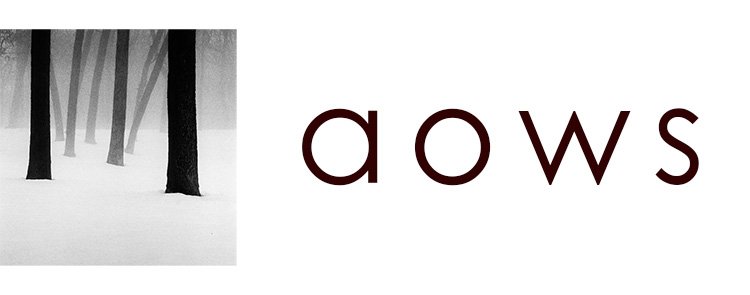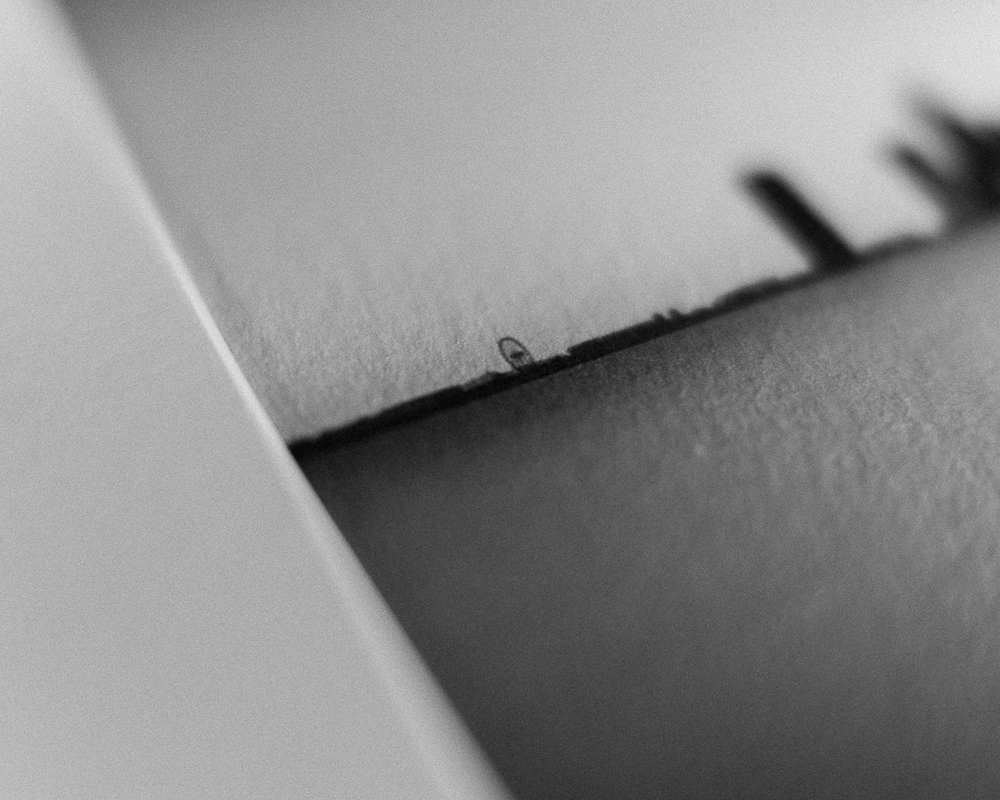I woke up to thick fog, so I quickly grabbed my bag and ran outside. I had no plans and somehow ended up trying to make images of storks. After a failed attempt with the Bronica, I went back to the location and finally made an image I love. I also shoot power lines, of course.
journal
When is an image made?
The moment we press the shutter is hardly the moment an image is made.
It's not until we have a final image, either on paper or on a screen, that we can say we have made an image. That's the moment an image is born.
This was home for 13 years ~ Long Exposure Photography with the Sony a6000 in A Coruña, Spain
I had to visit the city of A Coruña to get the images from my work "America Untitled" back, after one month on display.
Of course, I did some photography in that beautiful city, and this video shows some of the footage and the images I made over there. I also talk about how and why I made a couple of those.
"America Untitled" Photography Exhibit in A Coruña, Spain
Some highlights from the most recent exhibit of my work America Untitled, in A Coruña, Spain.
Snow, faking film and why there are no rules in photography
Finally got to shoot in the snow this winter! I take you with me on a short trip to the mountains, and then we take one of the images I made there, we edit it and we talk about what we can and can't do with our photos in post.
Q&A ~ Photography kit, developing a style, iconic locations, travel plans...
Winter photography: travel before the storm, photograph the storm
One of the most beautiful drives I’ve done.
Winter is my favorite season for photography. There's just one problem, though: the weather.
Over the years, I've gotten caught in several snowstorms (and even worse, ice storms) all over British Columbia, Nevada, Idaho, Oregon, California, South Dakota and of course, in the Midwest.
The trip through Northern California was the scariest one, I lost control of the car twice due to ice. That was the last time I drove through a snowstorm, putting yourself in danger for an image is not worth it. How do we do it, then?
This day, I had to drive 40 miles on frozen dirt roads to get to the closest town.
Travel before the storm.
That's what I did in South Dakota: I drove more than 1,000 miles in between two big storms and once the second one hit, I was ready and on location.
Photograph the storm.
It was mid-April when the blizzard came. Temperatures dropped to single digits (F) and the storm dumped almost a foot of snow. There was no one else around and no way to get to the Badlands after they closed the highway.
Winter wonderland.
I got one of my favorite images ever that day, and I had a winter wonderland waiting for me the next morning. Best of all, I was able to drive in and out of the park safely.
That's my advice for winter photography: avoid the road on severe weather conditions, be on location beforehand. If that's not possible and you still insist on making the drive, please make sure that you and your car are ready for the worst conditions.
Photography doesn't start with a camera
While it's totally possible to get a camera and then find a subject to photograph, it's definitely much easier to find something you are passionate about and then start capturing it.
If you gave me a camera 10 years ago, I wouldn't have known what to do with it.
Instead, photography came naturally to me when I discovered my passion for the outdoors after moving to the Pacific Northwest.
A camera is a tool to capture what we see. I didn't see anything 10 years ago. I do now.
A hundred words
A movie about the rain and the beauty it brings.
Your photography is a reflection of who you are
Josef Koudelka doesn't spend more than a few months at the same place. For him, being constantly on the move is a requirement "to see, and if I stay longer I become blind".
Other photographers seem to thrive in relatively confined spaces, like Bill Brandt.
Similarly, some photographers need to be shooting all the time and feel depressed when they don't have a camera on their hands. Others are fine with taking photography trips twice or three times a year.
In the end, I think there's no right or wrong way to do it, your photography is just a reflection of who you are.
How shooting film can make your images better
In this video, I go back to the beautiful Sil River Canyon. I was supposed to shoot film but my Bronica ran out of batteries. In the end and having to shoot digital, I felt like the video wasn't as compelling as it could've been if I shot the Bronica.
I believe that sometimes the story behind an image can be very important, even more than the image itself. Film can provide you such story.
Why you should document your work
I've talked about documenting our work before on this blog, and I wanted to share those and new thoughts on a video.
Next week, I'll share some tips I've learned over the years, and I'll talk about the camera gear I use.
Related:
The Mobile Darkroom: printing without negatives and enlarger
I was sick for all of last week. This gave me a lot of time to think, and I came up with a little project: building a darkroom as basic as possible so I could bring it with me everywhere.
This is still an on-going project, and in this video I share my thought process and the first results. I expect to have a much more refined and polished process by next week, along with the first final, serious prints.
Winter is the best time for photography, but you have to be careful
In my opinion, winter is the best time of the year to make images. It comes with some risks, though.
While I do go on some hikes, most of the shooting during the cold months is done not too far from the car. I drive to a location and make a few exposures. Then I drive to the next spot. This is what I did last week during some intense cold and foggy weather.
I wasn't careful enough and several days of moving between a warm car and the freezing outdoors have taken their toll on me.
It's just a cold and I'll be out making new images soon. It just kills me to see that the fog is still with us and I can't stop thinking about the images I'm not making. All because I was careless.
Fog is a photographer's best friend
New video where I shoot some film in some of the best conditions I've had in a while.
The landscapes of the Alentejo
There are no rules
"Photography is not a sport, there are no rules, everything must be tried and tested" - Bill Brandt
Bill Brandt is one my greatest inspirations. I love his landscapes, portraits and even the nudes (not a big fan of the genre, but the way he did it was just genius).
I think what I like the most about him is his approach to photography. For him, it was all about creating something with the medium, avoiding silly self-imposed rules.
He died in 1983, 5 years before Photoshop was created. That didn't stop him from completely changing his images in the darkroom. Actually, he admittedly did most of his work in the darkroom.
The image of the seagull is a good example. He added the bird afterwards, and the morning Sun years later.
He was brilliant, and we'd be wise to follow his advice to experiment and try everything.
PS: If you want to know more about Bill Brandt, I strongly recommend watching this interview from 1983 for BBC's Master Photographers.
My goals for 2019: small and frequent
My to-do list for 2019 is the same I had for 2018: become a better photographer.
The problem is that setting goals for anything creative like photography might be quite difficult. "Make better images" is not a goal that makes sense, since there's no way to measure it.
I do believe we become better at anything -creative endeavors included- the more we practice it, though. That means creating more content in whatever form that helps us improve as photographers.
Committing to create
Making commitments is very important for me. This might not apply to everyone, but I do my best work under pressure: knowing that I have to upload something tomorrow will force me to create that something.
This year, I'm committing myself to create every single day, and that can be easily measured: I will be uploading a new image every day and two new videos every week, among other things.
It might seem counterintuitive to force oneself to create, but I've made some of my best images after dragging myself out of the house into horrible conditions.
I only write when I’m inspired. Luckily, I am inspired at 9 o’clock every morning - disputed quote
Improvement will happen
If I follow through on my commitments, I will be a (much) better photographer by the end of the year. It couldn't be any other way: creating every day makes you a better artist.
Instead of setting big and rather abstract goals for the year, I am making small but frequent commitments.
After all, photography is a marathon that never ends and the only way to keep going forward is step by step.
Long Exposure of the Moon at Falesia Beach, in the Algarve
It's not often that I get clear skies and mild weather in the winter, so I decided to head to Falesia Beach, Albufeira, and make a long exposure of the Full Moon.
I made two exposures, one with my Sony a6000, and another one with the Bronica on Ilford HP5+.
Image of the Month, January 2019: "Awakening City"
The first Image of the Month of 2019 is here: Awakening City.
Awakening City was the image I had in mind when I was heading to Chicago, almost a year ago.
It took me a bit longer than expected to find the perfect spot, and it was only on my last day in the city that I was able to make the image I wanted.
This might look like a peaceful and beautiful scene, but that morning of late January was one of the coldest I've ever experienced.
Tne effort was completely worth it, though. This is one of my favorite images I've ever made, and it's part of the work I'm currently exhibiting, America Untitled.
Note: I'm keeping the image of December 2018, Wild West, at a discounted price until 11:59PM PST on Sunday 6th, due to an unusual busy Christmas time.
artist contract
A new image will be released every month and offered at a reduced price during that time. After 30 days, it will be sold at full price. They will never be on sale at any time in the future, the rate during the first month will be the lowest, ever.
want to know more?
You can find more information about how I create my images and all the details about pricing on The Art and Craft behind my prints.




